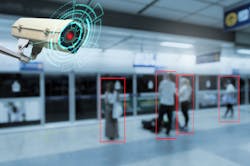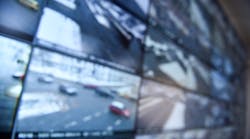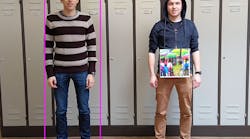Artificial intelligence has rapidly overhauled a wide range of industries, and security is no exception. This technology, especially in regard to facial recognition, has changed how we monitor public spaces and identify criminal behavior. To understand where we are now, you first have to understand where we came from.
How Security and Surveillance Have Evolved
We’re in a technological renaissance period for security and surveillance capabilities. However, activities designed to keep people and places safe started out with highly manual methods. We’ve since organized our efforts and learned new ways to leverage technology to our advantage.
Shared responsibilities
Traditional security started as something that was people-centered, which is to say that if you wanted to secure a public space, people had to do the legwork to guarantee that security. It was the responsibility of the community, and people understood that—hence the “hue and cry” to pursue and apprehend the suspect when a crime was suspected. Even the early city and town watches were more community-based than they were formal, official institutions.
Of course, when professional police forces were introduced, the dynamic changed, allowing society to become more passive. The model shifted from one of shared responsibility to one with a dedicated group of professionals.
Television monitoring
Eventually, technology came into the mix to augment police efforts. One major initiative was introducing closed circuit television (CCTV) in public spaces. The initial idea was that CCTV would serve as a deterrent, so people would be less likely to commit crimes. The problem was that the people being surveilled realized that cameras wouldn't be watched because they relied on a human being able to always pay attention. If security personnel wasn’t looking at the camera at the time of an incident, they wouldn’t see anything or dispatched anybody.
Of course, CCTV was—and still is—incredibly valuable. As something of a precursor to advanced facial recognition, CCTV became a forensic tool. With it, you can examine an event after it has happened, determining, for instance:
● What caused the event to occur
● What areas and times CCTV was deployed
Basic CCTV has evolved into sophisticated video surveillance systems that are also frequently used proactively when authorities are expecting trouble of some kind. This often happens at sporting events, where crowd violence is common outside stadiums. Police watch for specific individuals as a version of facial recognition.Introducing computers
It takes trial and error to perfect a solution, and the truth is that early facial recognition technology was relatively ineffective. People realized that if you pointed the camera in one direction, you couldn't see what was going on elsewhere. However, computer vision introduced expanded possibilities.
Computer vision has three strands: object classification, object identification, and object tracking.
● Object classification helps you differentiate objects from one another and can alert you to people breaking the rules.
● Object identification allows you to identify objects in association with people (e.g., everyone carrying a backpack).
● Object tracking gives insights into human actions relating to objects (e.g., the reasons behind their actions and what has triggered the response).
AI helps to enhance security at the moment or inform you as rapidly as possible so that actions can be taken to mitigate any harm.
Why Humans and Technology are Vital
Peanut butter without jelly; cake without ice cream. You can certainly have one without the other, but it may not be as satisfying. That’s true of humans and computers in security as well. Each side can do something the other needs help with, so they work better together.
Computer capacity
Computer intelligence elevates human capacity. We as humans are inherently limited in what we’re able to do. However, computer systems keep going. They don't get distracted, take time off, look away, or focus on the wrong thing. On the contrary—when computer vision is deployed, and the neural network is trained to differentiate between things—it functions 24/7/365.
Human context
Computer vision isn’t perfect, however. It can look for activity that is out of the ordinary, but then must rely on a human being to act on it. That’s because humans have the ability to understand context, whereas computers only understand data and input. For example, a computer vision system could recognize a real face, but couldn’t distinguish that from a face on a T-shirt. With the benefit of context, humans augment AI by making these distinctions and value judgments on whether something is suspicious.
Ethical Dilemmas and Future Possibilities
AI and facial recognition have the potential to help businesses expand their security capabilities rapidly, but the matter isn’t exactly black and white. You must weigh the ethics versus the potential advancements and proceed accordingly.
Ethical shades of gray
Easily the most divisive question regarding AI and facial recognition is a moral one: Just because we can technologically do something, should we do it? The answer isn’t clear-cut, but it does speak to the relationship between actions and expectations.
Think for a moment about the age-old restaurant policy: “No shirt, no shoes, no service.” The restaurant owner is well within their rights to require a certain level of decorum and modesty in their establishment, and you’ve agreed in order to patronize the business. Facial recognition follows a similar logic. If you go onto private premises, you’ve decided to do so and accept its rules—which include the potential deployment of facial recognition or artificial intelligence systems. Of course, the challenge is that people have a certain expectation of anonymity.
Future advancements
It’s nearly impossible to anticipate how AI and facial recognition will continue to shape and transform security and surveillance for businesses. However, from modest beginnings stemming from CCTV, video surveillance technology has already expanded our forensic capabilities, and real-time alerting has been effective in reducing incidences of crime. The next stop could be predictive analytics, wherein public behaviors could be predicted with a fair degree of certainty. With this capability, we can gather intelligence to reduce crime—or even stop it before it occurs.







